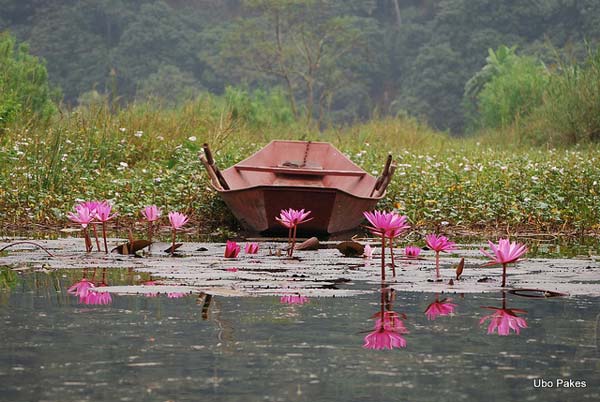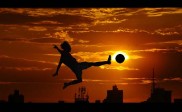Use the Characteristics of Liquids to Create Eye-Catching Photos
We have been taught early on that there are three states of matter: solid, liquid, and gas. While this is not a science lesson, we can benefit from knowing more about the characteristics of liquids in order to depict them creatively in our photos.
Countless subjects in photographs are in a liquid state, such as water, milk, juice, and beer. From landscape photography to tabletop studio shots, liquids can be used to create dramatic effects or to enhance the main subject.
Liquids Have Surface Tension
The surface of liquids acts like an elastic membrane which allows ripples and drops to form. You can see this characteristic in photos of dewdrops and raindrops, as well as water ripples in lakes and puddles.

Photo by A6U571N
Liquids Can Cast Reflections
Certain liquids, especially water, can act as a mirror and display reflections. The smoother the water surface, the clearer the reflection. Also, if there is hardly any illumination beneath the water, reflections become more visible. This characteristic is most often seen in seascape photos, where bodies of water act as giant mirrors that reflect mountains, trees, and other nearby objects.

Photo by ubo_pakes
Liquids Can Flow
Unlike solids, liquids have the ability to flow because their molecule particles are partially mobile and have a limited freedom to move around. This characteristic is most evident in photos of waterfalls, fountains, and rushing rivers. It is also used in studio shots, for example milk being poured out of a carton, or juice being poured into a glass.
When taking photos of flowing liquids, you can play with the shutter speed to create various, but equally interesting shots. By using a fast shutter speed, flowing liquids can appear frozen in the middle of action. On the other hand, a very slow shutter speed can make them appear smooth and silky, such as in this photo below:

Photo by James Jordan
Certain Liquids Can Mix with Other Liquids
Some liquids can mix with others (also called ‘miscibility’), such as water and alcohol, or water and food coloring, as shown in this photo:

Photo by gagstreet
Yet some of the liquids are immiscible and will not mix even if placed in the same container. A common example is water and oil.
Liquids Can Contain Bubbles
Another characteristic of liquids which makes them fascinating to shoot is that bubbles can form and remain intact under, or on their surface. These bubbles, which are composed of gas, can often be found in fizzy liquids, such as sodas and beer, as seen in this macro photo:

Photo by Tambako the Jaguar
Other characteristics of liquids are that they can freeze and turn into ice, or evaporate and turn into steam or gas. They also provide buoyancy, which you can use to make objects sink or float in your shots depending on their density. Another property of liquids is that they assume the shape of what they occupy, such as a bottle, a glass, or a mold.

Photo by Kyle May
Next time you use liquids in your photography, consider their characteristics and experiment with how you can use them to make your shots all the more appealing.




Impressive photo techniques, must be inspiration for photgraphers.
Many thanks for posting.